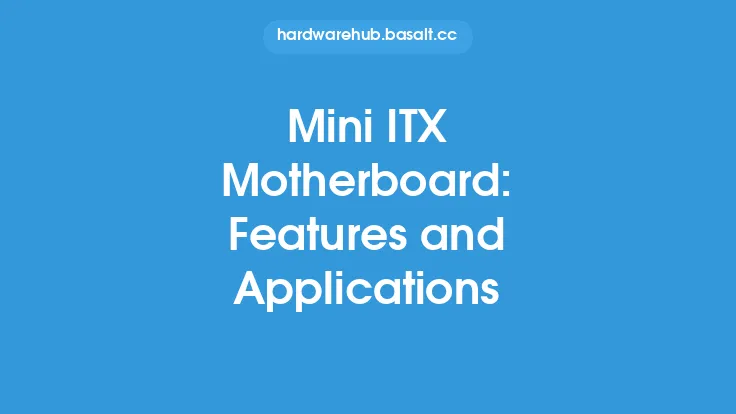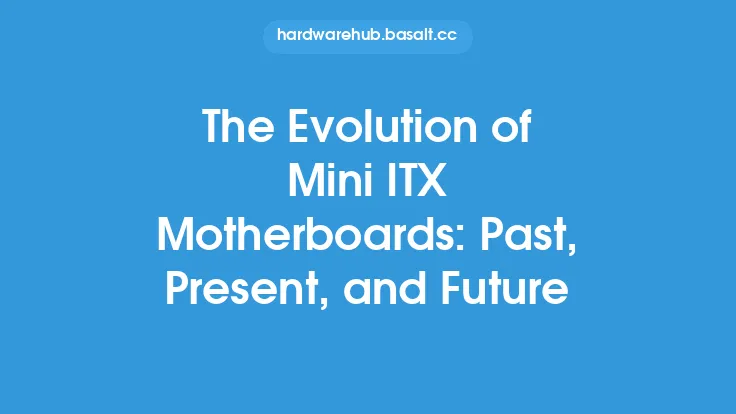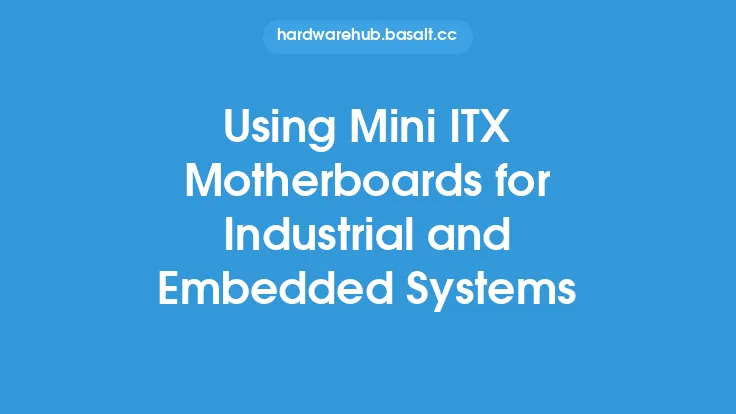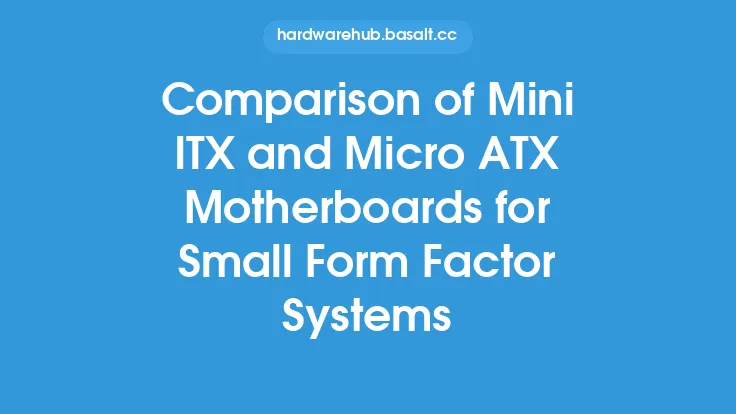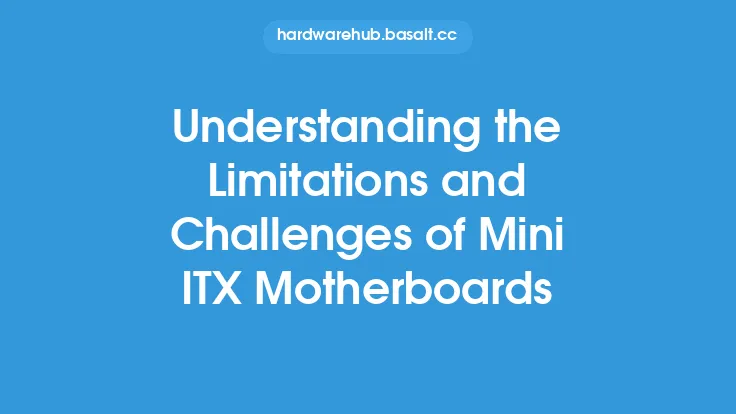The Mini ITX motherboard is a type of small form factor (SFF) motherboard that has gained popularity in recent years due to its compact size, low power consumption, and versatility. Measuring just 6.7 inches (17 cm) square, Mini ITX motherboards are designed to be used in small form factor systems, such as home theater PCs, compact gaming PCs, and industrial control systems. In this article, we will delve into the features, benefits, and applications of Mini ITX motherboards, exploring their technical specifications, advantages, and uses.
Technical Specifications
Mini ITX motherboards are based on the ITX form factor, which was introduced by VIA Technologies in 2001. The ITX form factor is a smaller version of the traditional ATX form factor, with a reduced size and a more compact layout. Mini ITX motherboards typically have a maximum of four expansion slots, including a single PCI Express x16 slot, one or two PCI Express x1 slots, and one or two legacy PCI slots. They also have a limited number of USB ports, SATA ports, and other connectors, which can make them less suitable for systems that require a large number of peripherals.
In terms of technical specifications, Mini ITX motherboards can support a wide range of processors, including Intel Core i3, i5, and i7 processors, as well as AMD Ryzen and Athlon processors. They can also support up to 64 GB of DDR4 memory, depending on the specific model and configuration. Mini ITX motherboards often have integrated graphics, sound, and networking capabilities, which can make them a good choice for systems that do not require high-end graphics or sound.
Benefits
One of the main benefits of Mini ITX motherboards is their compact size, which makes them ideal for use in small form factor systems. They are also highly energy-efficient, which can make them a good choice for systems that need to be powered by a small power supply or battery. Mini ITX motherboards are also relatively inexpensive, which can make them a good option for budget-conscious builders.
Another benefit of Mini ITX motherboards is their versatility. They can be used in a wide range of applications, from home theater PCs to compact gaming PCs, and from industrial control systems to embedded systems. Mini ITX motherboards are also highly customizable, with a wide range of options for expansion cards, peripherals, and other components.
Applications
Mini ITX motherboards have a wide range of applications, from consumer electronics to industrial control systems. One of the most popular applications for Mini ITX motherboards is in home theater PCs, where they can be used to build compact and energy-efficient systems for streaming media and playing games. Mini ITX motherboards are also popular in compact gaming PCs, where they can be used to build small and powerful systems for playing games on the go.
In addition to consumer electronics, Mini ITX motherboards are also used in industrial control systems, where they can be used to build compact and reliable systems for controlling machinery and equipment. They are also used in embedded systems, where they can be used to build small and specialized systems for applications such as robotics, medical devices, and automotive systems.
Design and Layout
The design and layout of Mini ITX motherboards are critical to their functionality and performance. Mini ITX motherboards typically have a compact layout, with components such as the CPU, chipset, and memory modules located in a small area. The layout of the motherboard can affect the airflow and cooling of the system, which can impact the performance and reliability of the components.
Mini ITX motherboards often have a limited number of expansion slots and connectors, which can make them less suitable for systems that require a large number of peripherals. However, they can also have integrated components such as graphics, sound, and networking, which can make them a good choice for systems that do not require high-end graphics or sound.
Power Consumption and Cooling
Mini ITX motherboards are designed to be energy-efficient, with low power consumption and heat generation. They often have a small power supply unit (PSU) and a compact cooling system, which can make them a good choice for systems that need to be powered by a small power supply or battery.
The power consumption of Mini ITX motherboards can vary depending on the specific model and configuration, but they are generally designed to consume less power than larger motherboards. They can also have a range of power-saving features, such as sleep modes and low-power states, which can help to reduce power consumption when the system is not in use.
Conclusion
In conclusion, Mini ITX motherboards are a type of small form factor motherboard that offers a range of benefits and applications. They are compact, energy-efficient, and versatile, making them a good choice for systems that require a small footprint and low power consumption. Mini ITX motherboards have a wide range of technical specifications, including support for a range of processors, memory, and expansion cards. They are also highly customizable, with a range of options for expansion cards, peripherals, and other components. Whether you are building a home theater PC, a compact gaming PC, or an industrial control system, Mini ITX motherboards are definitely worth considering.
